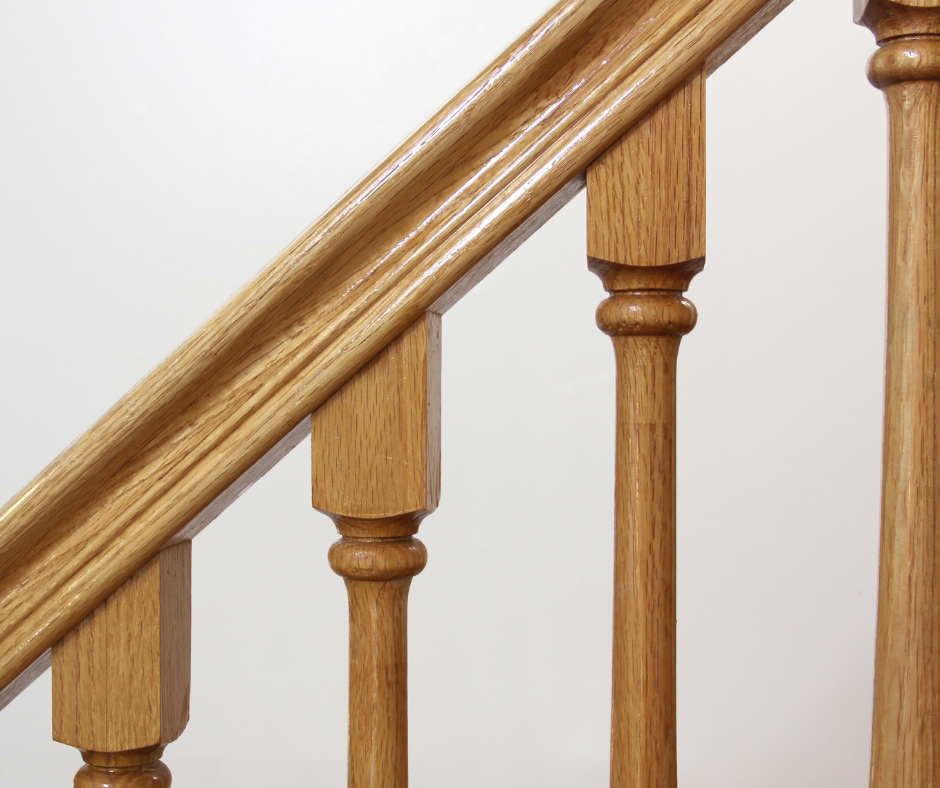Ever thought about how indoor wood handrails for stairs can spruce up your home? Indoor wood handrails for stairs not only keep you safe but also add a touch of class. Especially when paired with carpet stair treads. They offer support and style, making your staircase both useful and pretty. Let’s dive into the world of indoor wood handrails and see how they can make a difference.
What's the Difference Between a Handrail and a Stair Rail?
You might be scratching your head wondering, what’s the difference between a handrail and a stair rail? A handrail is the part you hold onto for support, running alongside the stairs. A stair rail, also called a guardrail, acts as a barrier on the open side of the stairs to stop falls. Both are important for safety but do slightly different jobs.
Parts of a Staircase
Before we jump into handrails, let’s get to know the basic parts of a staircase:
- Treads: The flat part you step on.
- Risers: The vertical part between each tread.
- Stringers: The diagonal supports on each side of the stairs.
- Handrails: The rail you grab for support.
- Newel Posts: The sturdy posts at the top and bottom of the stairs.
- Balusters: The vertical posts that support the handrail.
Knowing these parts helps you understand where handrails fit into the staircase.
Simple Stair Handrail
Looking for a simple stair handrail? Sometimes, keeping it simple is the best way to go. A plain wooden handrail can give your staircase a timeless look without making things too busy. Simple designs often feature a smooth, rounded piece of wood running along the stairs, attached to the wall with brackets. It’s functional, easy to install, and looks great.
Should Handrails Be Present on Each Side of a Staircase?
Ever wondered if you need handrails on both sides of the staircase? It depends on how wide your stairs are and local building rules. For narrow stairs, one handrail might do the trick. But for wider staircases, especially in public places, handrails on both sides make things safer. Be sure to check your local codes to know what’s needed.
How Many Steps Can You Have Without a Handrail?
Thinking about how many steps you can have without a handrail? Usually, if you’ve got more than three steps, a handrail is a good idea for safety. This can vary based on local building rules, so check those out to make sure your staircase is up to code.
Choosing the Right Wood for Handrails
Picking the right wood for your handrails is like choosing the right ingredients for a recipe. Popular choices include:
- Oak: Strong and long-lasting.
- Maple: Smooth finish with a clean look.
- Cherry: Warm, rich color.
- Pine: Affordable and easy to work with.
Each type of wood has its own charm, so think about what matches your home’s style and your budget.
Installation Tips for Indoor Wood Handrails
Installing wood handrails might sound tough, but with a few tips, you can do it like a pro:
- Measure Twice, Cut Once: Accurate measurements are key.
- Pre-Drill Holes: Helps prevent the wood from splitting.
- Use Good Brackets: Make sure your handrail is firmly attached.
- Finish Smoothly: Sand and finish the wood to avoid splinters and make it look nice.
Maintaining Your Wood Handrails
To keep your wood handrails looking sharp, regular maintenance is a must. Dust them often and clean with a damp cloth to get rid of grime. Every few years, give them a fresh coat of finish to bring back the shine and protect the wood.
Adding Decorative Touches
Want to add some flair to your handrails? Think about decorative elements like carved designs, fancy brackets, or mixing wood with metal. These touches can make your handrails stand out and become a highlight of your home.
Wrapping Things Up
Indoor wood handrails for stairs are a big part of your home, keeping you safe and making your stairs look great. By picking the right types, installing them well, and taking care of them, you can have handrails that are both practical and pretty. Whether you go for a simple look or something more fancy, wood handrails can make a big difference in your home.



